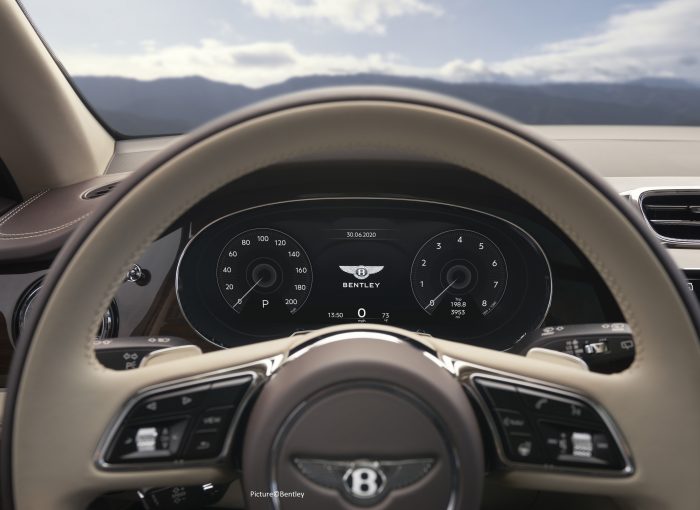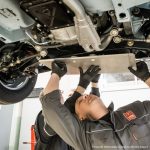One of our readers was caught doing 34 miles per hour in a 30 zone. He thought he was safe because his car’s speedometer was showing 35mph and he believed there was a tolerance for speeding. And that begs the question are car speedometers accurate?
List of contents
Are car speedometers accurate?
There are rules that govern how a car’s speedometer should read. First of all, legislation says it can’t under-read. So if you’re doing a real 32mph, your speedo won’t be showing 30mph.
However speedos can over-read perfectly legally. It’s no bad thing, legislators reason, for a speedometer to be showing 35mph when the car is actually doing 30mph. It’s unlikely that two cars will have a speedo that gives an identical and perfectly accurate readout all the time.
Laws around calibrating speedos
Legislation says that a speedo can’t over-read by any more than 10% plus 6.25mph. If you’re doing a real 30mph, legally, your speedo can’t say you’re doing more than 39.25mph. If you’re doing 50mph, it can’t show you to be doing any more than 61.25mph.
What is the tolerance for speeding?
There is no tolerance for speeding. So if you’re doing 21mph in a 20 zone, you can be nicked for speeding. The National Police Chiefs Council does recommend some leeway. That is 10% plus 2mph ‑ so that would make 35mph in a 30 zone. But it is only a recommendation. Officers or forces don’t have to stick to it.
Our reader was obviously unlucky enough to come across an officer who was following the letter of the law.

How does a speedometer work?
It depends on the age of the car. Most modern cars are fully furnished with electronics. The majority have safety features such as anti-lock braking (ABS) and Electronic Stability Control (ESP or ESC). For these to operate effectively, there have to be speed sensors on the individual wheels.
The engine control unit (ECU) takes a reading from each of the four sensors. These can turn the amount the wheel is rotating into the actual speed on the road. The ECU then gives an average speed which is displayed on the instrument panel.
On older cars, speedometers used a rotating cable attached to the driveshaft. This had a magnet at one end which rotated inside a magnetic cup that was attached to the speedo’s needle. The faster the car goes, the faster the magnet at the end spins and the higher speed the indicator needle points to.
Will changing wheel size have an impact on speedometer accuracy?
As we’ve seen modern cars take their true speed reading from the wheels and more specifically the number of times they rotate. To do so they must be carefully calibrated. This is because their reading is dependent on wheel size.
Consider this: a 17-inch wheel is going to have to go round more over a given distance than a 19-inch wheel. So to cover the same distance in the same amount of time, the smaller wheel will have to travel faster.
So if the sensors don’t know the wheel size has changed, the car will be carrying out its calculations on a wheel that might be turning more slowly than the one it’s been calibrated for. And that means it won’t be able to calculate the true speed.
Do tyres have an impact on speedometer accuracy?
The answer’s yes… and no. If tyre pressure is lower, the underinflated tyre – and therefore wheel – must rotate more quickly to cover the same ground as a properly inflated tyre.
While it’s quite common for cars to have one or two tyres underinflated, if they’re inflated sufficiently not to have an impact on the drive, the effect they have on the speed reading will be tiny. And the difference in overall wheel circumference will certainly be a lot less than if you swap from an 18 to 19-inch wheel, for example.
How to find your speedo’s accuracy
It’s relatively straightforward. If you’ve got a sat nav, it should show you the speed your car is travelling at. Unlike your car, it will use GPS to calculate how fast you’re going. This is continuously bouncing a signal to and from a satellite and calculating the distance covered over time. This enables a much more accurate calculation of speed than a car can manage.
Do speed cameras have a margin of error?
Again, that depends on who is operating them. Some forces will calibrate them to catch drivers exceeding the speed limit by 1 or 2mph. Others will set them to be more lenient. Speed cameras have to be Home Office approved and calibrated annually to Home Office guidelines. And that’s whether they’re average speed cameras or the mobile units you see in vans.

I’ve been writing about cars and motoring for more than 25 years. My career started on a long-departed classic car weekly magazine called AutoClassic. I’ve since pitched up at Autosport, Auto Express, the News of the World, Sunday Times and most recently the Daily Telegraph. When I’m not writing about cars and motoring, I’m probably doing some kind of sport or working in my garden.







